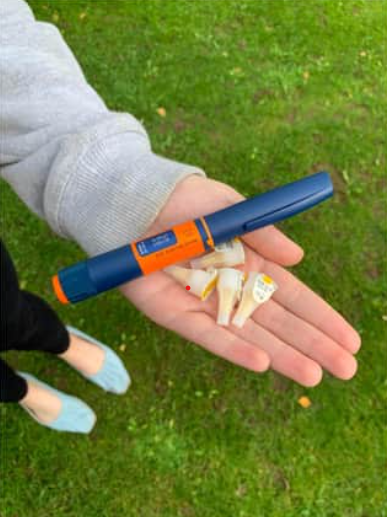There are two types of Diabetes, and being aware of the differences between these types is arguably the most important aspect of understanding the disease.
This National Diabetes Day, we will explain how the two diseases can affect individuals, and a small part of the science behind them.
Type 1 and Type 2 Diabetes are often confused, mostly because they are both simply referred to under their umbrella term ‘Diabetes’.
This could also be because the base of the disease is the same: having too much sugar in your blood.
However, type 1 and type 2 come from slightly different causes…
In diabetes type 1, the pancreas does not make insulin, because the body’s immune system attacks the islet cells in the pancreas that make insulin.
In diabetes type 2, the pancreas makes less insulin than used to, and your body becomes resistant to insulin.
Diabetes UK said on their website. “If you have either type 1 or type 2 diabetes, it means you have too much glucose (a type of sugar) in your blood.
“This is the same for both types.”
This means that most of the symptoms for both are the same:
- Feeling more tired than usual.
- Wounds and cuts taking longer to heal.
- Needing to go to the toilet more than usual, particularly at night.
- Feeling really thirsty.
- Experiencing thrush or genital itching.
- Having blurred vision.
- Losing weight without trying to.
However, the difference lies in how having too much glucose in your blood happens in the first place.
This affects how the symptoms of diabetes appear – much more quickly in type 1 – as well as how the diabetes is managed.
A fundamental difference between type 1 and type 2 diabetes is that type 1 is an autoimmune condition and is not caused or impacted by your lifestyle.
Lifestyle factors, including your diet, weight, or exercise routine make no difference to your risk of developing type 1 diabetes.
There is also no known cure for type 1 diabetes, so people with this disease rely on injections or pumps of insulin their entire lives.
However, type 2 diabetes is mostly caused by lifestyle factors, namely weight gain or inactivity.
Diabetes UK said this does not make type 2 diabetes less serious than type 1, as there is no such thing as ‘mild diabetes’.
Often, it is believed that type 2 diabetes is caused by eating too much sugar, which is not the cause.
While eating too much sugar can contribute to weight gain which can indirectly bring on the disease, it is not a direct cause.
Being overweight is not, however, the only cause and accounts for 65-80% of cases, according to the World Health Organization (WHO).
Other causes can include:
- Getting older.
- Having a family history of diabetes.
- Being an ‘apple’ rather than a ‘pear’ – in other words, excess weight accumulating around your midriff.
- Leading an inactive lifestyle.
- Having an Afro-Caribbean, Black African, or South Asian ethnic background.
Diabetes UK has a Sheffield group and hosts meetings at Houlden Hall in Fargate.
The group is hosting an event on Thursday, ‘Growing Up & Diabetes’, hosted by Dr Paul Manning, a Diabetes Clinical Psychologist at Sheffield Children’s Hospital.
Shirley Sherwood, Chair of the Sheffield branch, said in their monthly newsletter: “Two very special people in my family were diagnosed with type 1 at an early age and I have seen the daily challenges they’ve faced growing up with Diabetes.”
For more information on the two types of diabetes, visit: https://www.diabetes.org.uk/diabetes-the-basics

